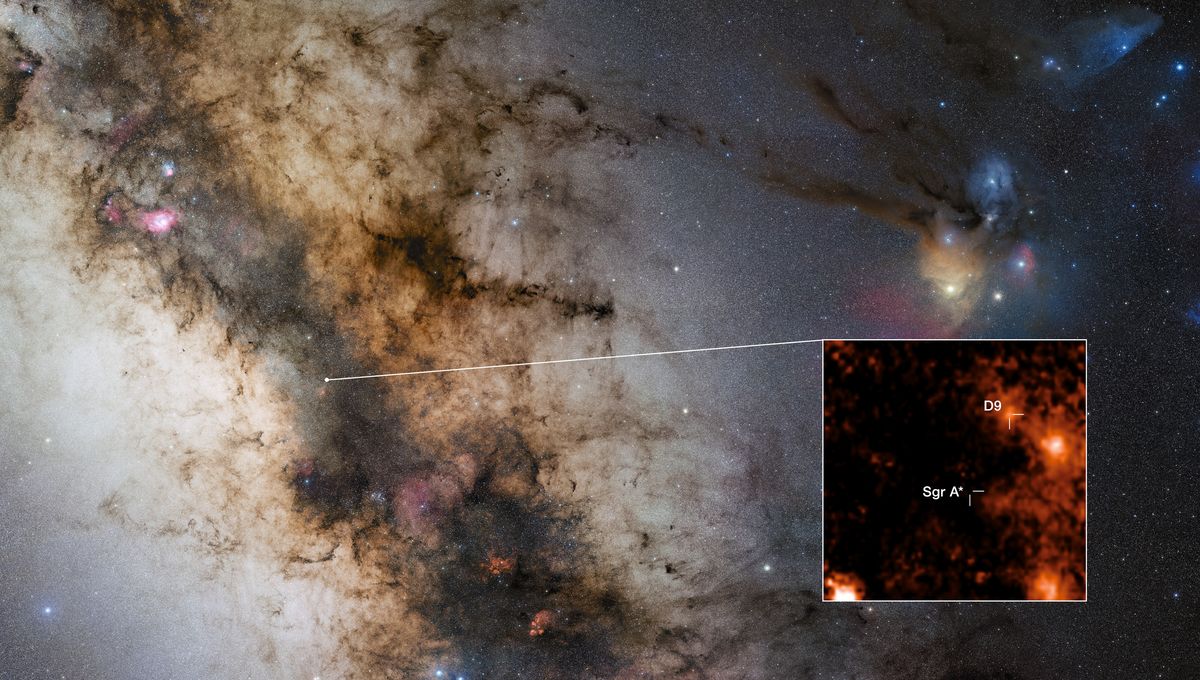
Sagittarius A* is the supermassive black hole at the center of our galaxy, the Milky Way. As black holes go, it is pretty quiet, which has allowed for an interesting environment in its surroundings – for example, there are a lot of stars around it. Some of them orbit Sagittarius A* in a matter of years, and now researchers have found the first system there with two stars orbiting each other.
The system is known as D9 and is part of the S cluster of stars surrounding the supermassive black hole. The stars that get closest to Sagittarius A* belong to this cluster, but a peculiar class of these objects called G objects were the subject of studies in this work. They behave like stars but look like clouds of gas and dust. Within the data, researchers found evidence that this peculiar object was a double star.
“I thought that my analysis was wrong, but the spectroscopic pattern covered about 15 years, and it was clear this detection is indeed the first binary observed in the S cluster,” Florian Peißker, lead author of the study and a researcher at the University of Cologne, said in a statement. “Black holes are not as destructive as we thought!”
Using observations from ESO’s Very Large Telescope, the team estimates that the two stars are quite young, maybe around 2.7 million years old. One of the stars is about 2.8 times the mass of the Sun and the other is about 0.73 times the mass. They orbit each other in around 372 days.
“The D9 system shows clear signs of the presence of gas and dust around the stars, which suggests that it could be a very young stellar system that must have formed in the vicinity of the supermassive black hole,” explained study co-author Michal Zajaček, a researcher at Masaryk University, Czechia, and the University of Cologne.
Clearly, despite their proximity, they are safe enough from Sagittarius A* – although that might change. The team estimates that within one million years, the two stars will merge into one due to the gravitational influence of the black hole.
“This provides only a brief window on cosmic timescales to observe such a binary system — and we succeeded!” explained study co-author Emma Bordier, a researcher also at the University of Cologne and a former student at ESO.
The team speculates that binary systems such as D9 are perhaps the progenitors of the G objects. These weird celestial bodies might be stars about to merge, or post-merger stars with a lot of leftover material around them. The existence of D9 as a system also opens another exciting possibility here: planets.
“Our discovery lets us speculate about the presence of planets, since these are often formed around young stars. It seems plausible that the detection of planets in the Galactic centre is just a matter of time,” concluded Peißker.
The paper is published in the journal Nature Communications.
Source Link: First Ever Pair Of Stars Orbiting Each Other Near Our Galaxy's Supermassive Black Hole Discovered